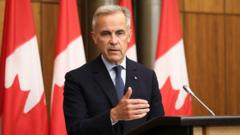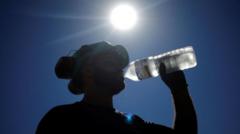The city of Toronto is experiencing an unexpected and intense heat wave that has prompted health warnings and significant adjustments in public services. Temperatures soared to around 36 degrees Celsius (97 degrees Fahrenheit), marking the most extreme heat recorded since July 2016, sending many residents indoors in search of relief from the sweltering conditions.
With the heat persisting for several days, public safety concerns intensified, leading to the temporary closure of some public schools due to issues in providing safe lifeguard services. Olivia Chow, Toronto's mayor, expressed her frustration over the closures, emphasizing the necessity for better access to cooling facilities during such extreme weather events. “This cannot happen again,” she stated, indicating plans to hire more lifeguards and create shaded areas for their relief.
Health officials issued warnings advising residents to stay in cooler spaces and stay hydrated, reminding everyone of the signs of heat exhaustion which can include nausea and severe fatigue. According to meteorologist Steven Flisfeder, high humidity exacerbates discomfort and poses additional challenges for the body's temperature regulation, stressing the need for vigilant public health measures.
The extreme heat has also caused disruptions to public pool access, which resulted in public outcry from individuals eager to find respite in the water. The ongoing conditions have been a stark reminder of resource disparities, with approximately 70% of homes in Canada lacking air conditioning compared to about 90% in the United States.
As the heat wave shows signs of a potential cooldown by midweek, residents remain apprehensive about the rising heat trends and the pressures they place on public health and infrastructure. The situation has accentuated the urgent need to improve the city’s capacity to handle extreme weather while ensuring all community members have access to safe cooling options during future heat spells.





















